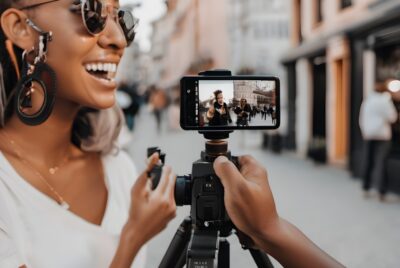Texture Photography: Capture the Beauty of Tactile Details
Introduction: Exploring the Art of Texture Photography
Embracing the world of texture photography allows us to uncover the hidden beauty found in everyday objects and surfaces. By capturing the intricate details, patterns, and tactile qualities of various textures, we can create visually compelling and engaging images. In this article, I will share valuable insights and practical tips to help you master the art of texture photography.
Understanding the Importance of Lighting
Lighting plays a pivotal role in texture photography as it highlights the unique characteristics of different surfaces. Experiment with different lighting conditions to observe how they affect the texture. Soft diffused light creates smooth and subtle textures, while directional light casts interesting shadows and enhances depth. Understanding how lighting interacts with textures will enable you to capture their true essence.
Selecting the Right Subjects
The key to captivating texture photography lies in finding interesting subjects that exhibit compelling textures. Look beyond the obvious and explore diverse environments. Urban areas offer weathered walls, graffiti, and architectural elements, while natural landscapes provide an array of textures found in rocks, leaves, and tree barks. Even everyday objects like fabrics, metals, or food can yield fascinating textures when viewed up close.
Composing for Impact
Effective composition is crucial in showcasing the textures and creating visually pleasing images. Consider the placement and framing of the texture within the frame. Experiment with different angles, perspectives, and focal lengths to emphasize the texture’s details and patterns. Fill the frame with the texture or use it as a prominent element within a larger composition for added visual impact.
Exploring Post-Processing Techniques
Post-processing allows you to enhance and emphasize the textures captured in your photographs. Experiment with adjustments like contrast, clarity, and sharpening to bring out the fine details of textures. Utilize selective editing tools to target specific areas and enhance textures without affecting the overall image. By carefully fine-tuning the post-processing, you can create images that truly showcase the texture’s richness.
Capturing Textures with Smartphone Cameras
You don’t need a professional camera to delve into texture photography; smartphone cameras have evolved to deliver impressive results. Take advantage of the macro mode or lens attachments available for smartphones to get closer to the textures and experiment with different angles. Pay attention to lighting and composition to capture stunning texture details using the convenience of your smartphone.
Conclusion
• Texture photography offers a unique way to capture and appreciate the tactile beauty present in our surroundings. By understanding the role of lighting, selecting compelling subjects, mastering composition, exploring post-processing techniques, and utilizing smartphone cameras effectively, you can elevate your texture photography skills and create captivating images that engage the viewer’s senses.
Texture Photography FAQs
1. How can I enhance textures in my photos during post-processing?
• Experiment with adjustments like contrast, clarity, and sharpening to bring out the fine details of textures.
• Utilize selective editing tools to target specific areas and enhance textures without affecting the overall image.
2. What are some tips for finding unique texture subjects?
• Explore diverse environments such as urban areas, natural landscapes, or even your own surroundings.
• Look for patterns, surfaces, and objects that display interesting textures, such as weathered walls, tree barks, or textured fabrics.
3. Can I capture textures with a smartphone camera?
• Absolutely! Smartphone cameras have advanced significantly and can capture impressive texture details.
• Utilize the macro mode or lens attachments available for smartphones to get closer to the textures and experiment with different angles.
4. How does lighting affect texture photography?
• Lighting plays a crucial role in texture photography, as it emphasizes the shadows, highlights, and depth of textures.
• Experiment with different lighting conditions, such as soft diffused light or directional light, to observe the impact on the texture.
5. Are there any recommended editing software or apps for texture photography?
• There are several popular editing software options such as Adobe Lightroom and Photoshop, which provide extensive tools for enhancing texture details.
• Additionally, there are various mobile apps available, like Snapseed and VSCO, that offer editing capabilities specifically designed for smartphone photography and texture enhancement.
Further reading
Check out our other relevant articles:
Contrasting Photography: Unleashing the Power of Visual Depth
.




